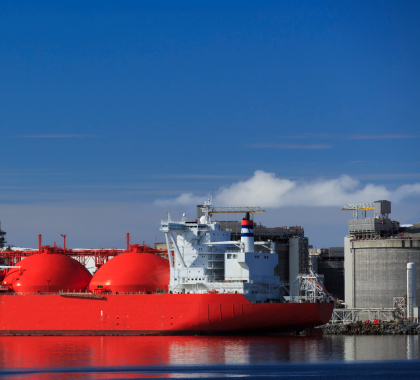Climate Change (aka global warming) is becoming an even bigger issue with the new Democratic-controlled U.S. House of Representatives and its calls for a “Green New Deal (GND),” the very name of which should be a reminder statist controls were always an integral part of the extremist environmentalists’ agenda.
GND proponents now use global warming as their justification for central planning, long after the collapse of the Soviet model discredited the socialist dream.
The recent United Nations climate report and Paris climate treaty—from which President Donald Trump withdrew the United States—stressed socialist economic planning such as a $100 billion per year transfer of wealth from the poor in wealthy nations to the rich in Third World countries.
Climate change is happening around the globe, as it always has and will. It has been warmer and cooler in the past in the Arctic and around the world, and oceans are rising at the rate of about one foot per century, having risen at both much faster rates and modestly slower rates since the end of the last ice age. The oceans have risen approximately 400 feet in the past 14,000 years. The current rate of sea level rise is at the low end of the historical annual rate.
Hyping Ocean Worries
The climate fearmongering movement’s overwhelming control of Big Media virtually silences those calling for rational debate about the causes and consequences of climate change.
Every weather event that can be portrayed as extreme is blamed on global warming and met with demands for new subsidies for politically favored so-called green energy technologies and obstructive regulations for less-expensive, more-reliable traditional energy sources.
A perfect example of such scare stories was a recent front page report in the New York Times: “Ocean Temperatures Rising Faster—new analysis suggests dire effect on food and weather.” The article reports “oceans are heating up 40 percent faster on average than a United Nations panel estimated five years ago.” Typical of nearly all such stories, The Times does not report the actual amount of the temperature increase involved. That’s because it is infinitesimal: about one-tenth of one degree centigrade (0.09 to 0.13 degrees) per decade over the past 40 years, less than two-tenths of one degree Fahrenheit.
A U.S. Environmental Protection Agency report shows an approximate 1.5 degree Fahrenheit increase in ocean surface temperatures since 1880. The increase in temperatures reported in the Times article is within the margin of error for the measurement, meaning the purported rise could just be background noise representing no actual increase in ocean temperatures at all.
Ignoring Contrary Evidence
In another typical fearmongering report, “Melting Arctic Ice now pouring 14,000 tons of melting ice into the oceans,” the Washington Post says the Arctic “now adds well over a millimeter to the level of the ocean every year.” The story no doubt assumes most Americans don’t know how little a millimeter is, and the Post does not reveal that this equals about one foot per century.
More importantly, contrary to climate model projections and with little media notice, Antarctica has been gaining billions of tons of ice each year, offsetting sea level rise by 0.23 millimeters a year, despite the modestly warming temperatures of the past century.
The Washington Post story ignores the fact some areas are seeing their coastlines expand and experiencing falling sea levels despite increasing greenhouse gas emissions.
In addition, local land subsidence is responsible for many of the areas experiencing the largest amount of supposed “sea level rise.” Many coastal areas are being eroded or sinking as coastal development builds on relatively unstable former wetlands and as cities draw increasing amounts of water from underground aquifers near coastlines, resulting in land subsidence and sinkholes that fill with salt water.
Climate models fail to consider these factors, and those stoking climate fears ignore them because fixing those problems doesn’t require a big government takeover of the nation’s economy.
Limiting the Discussion
Having been unable to stampede Americans to support big government programs to prevent the atmosphere warming by a modest 2 degrees, the media concentrates on ocean warming and rising seas because they hope to use it as a terror tactic to get Americans to agree to spend hundreds of billions of dollars to prevent it.
Carbon dioxide (CO2) represents less than one tenth of 1 percent of the atmosphere: .04 percent, meaning 400 parts per million. All the global warming fuss is based on CO2 levels having increased by a tenth of a percent. Yet, CO2 is only one of the factors affecting climate and weather. Water vapor is a much more prevalent “greenhouse gas” than C02, but one over which humans have little influence. Climate and weather are also affected by sunspots, volcanic activity, ocean currents, and atmospheric reflectivity, among other factors.
Smearing Those Who Disagree
When confronted with these facts, climate alarmists smear those who question their claims human greenhouse gas emissions are causing whatever catastrophe they are hyping at the moment.
Climate forecasts about weather and warming have been proved vastly exaggerated or even totally wrong. No one should trust them.
We certainly should not embrace energy socialism, which calls for the replacing of cheap, reliable fossil fuels with expensive, intermittent wind and solar, as the Nongovernmental International Panel on Climate Change’s recent report, Climate Change Reconsidered: Fossil Fuels, shows.
The United States and the world would be much poorer if countries adopt climate alarmists’ infinitely costly measures to fight a nonexistent catastrophe.
Jon Utley ([email protected]) is publisher of The American Conservative.
INTERNET INFO
Nongovernmental International Panel on Climate Change, “Climate Change Reconsidered II: Fossil Fuels—Summary for Policymakers,” October 5, 2018: https://heartland.org/publications-resources/publications/climate-change-reconsidered-ii-fossil-fuels—summary-for-policymakers





